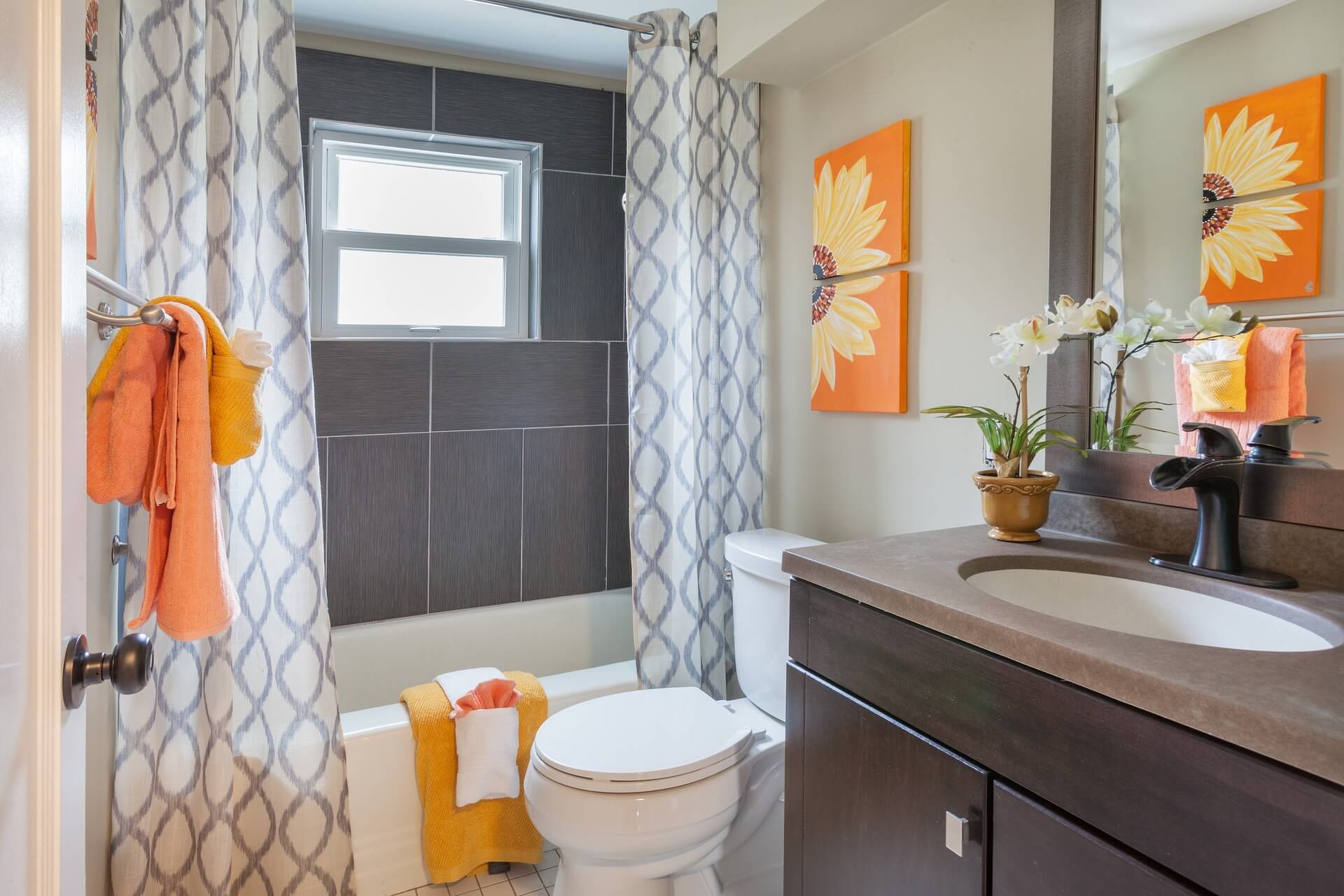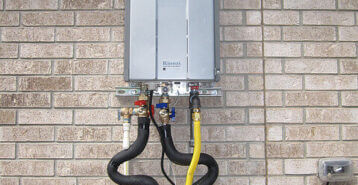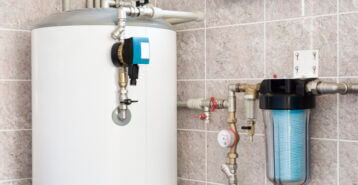Are you doing a bathroom remodel project?
Modernize can pair you with three to four pros in your area, so you can compare options and save time and money.
Bathrooms are an integral part of any home. As spaces that provide privacy, functionality, and relaxation, they play a significant role in our daily routines. When designing or renovating a bathroom, understanding the standard sizes can be crucial for ensuring comfort, accessibility, and optimal use of space. This article delves into the standard bathroom sizes in the U.S., exploring dimensions for various components and configurations.
Understanding Standard Bathroom Sizes
Bathroom dimensions play a crucial role in designing and remodeling a home. Typically, bathrooms are categorized into four distinct sizes: half, three-quarter, full, and primary. A half bathroom, often called a powder room, mainly contains a toilet and sink. A three-quarter bathroom is slightly larger, featuring a shower, toilet, and sink. A full bathroom offers a bathtub (with or without a shower), toilet, and sink, while a primary bathroom, usually attached to the main bedroom, provides a spacious environment with potential for a bathtub, separate shower, dual sinks, and sometimes even luxurious amenities. Recognizing these standard sizes helps homeowners and designers ensure functionality and comfort.
Half Bath or Powder Room
Typically, the smallest type of bathroom, a half bath (or powder room) includes only a toilet and a sink.
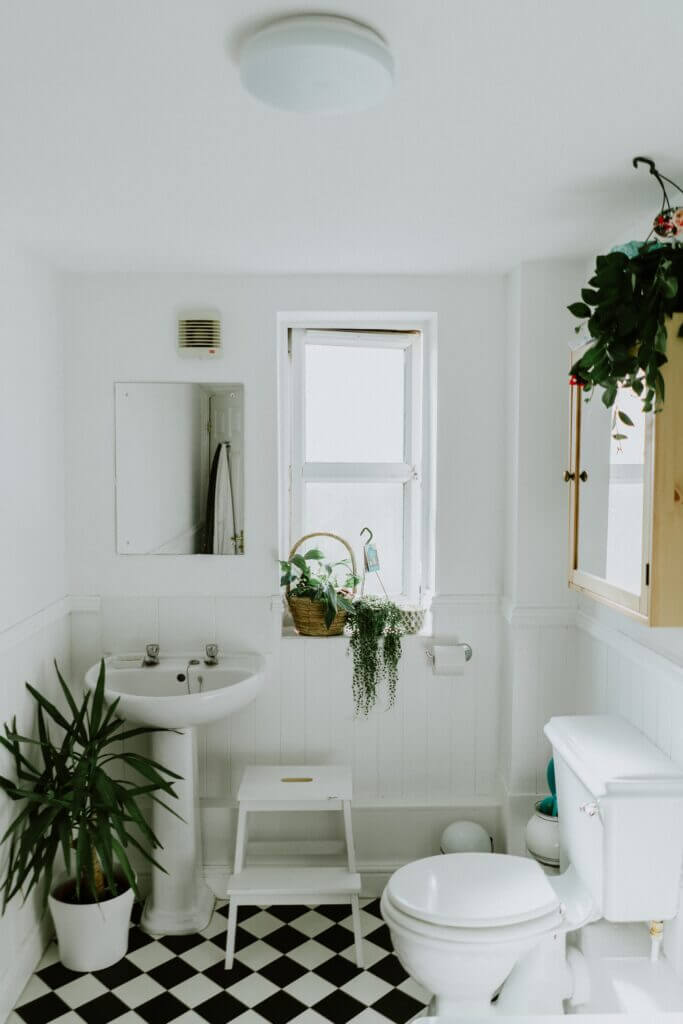
Standard Half Bathroom Size
- Area: Between 18 and 32 square feet (about the area of a queen-sized bed)
- Dimensions: Usually around 3′ x 6′ or 5′ x 5′
This compact design serves guests and can be tucked into tight spaces or first-floor layouts for convenience.
Three-Quarter Bathroom
This type of bathroom includes a toilet, sink, and either a shower or bathtub, but not both.
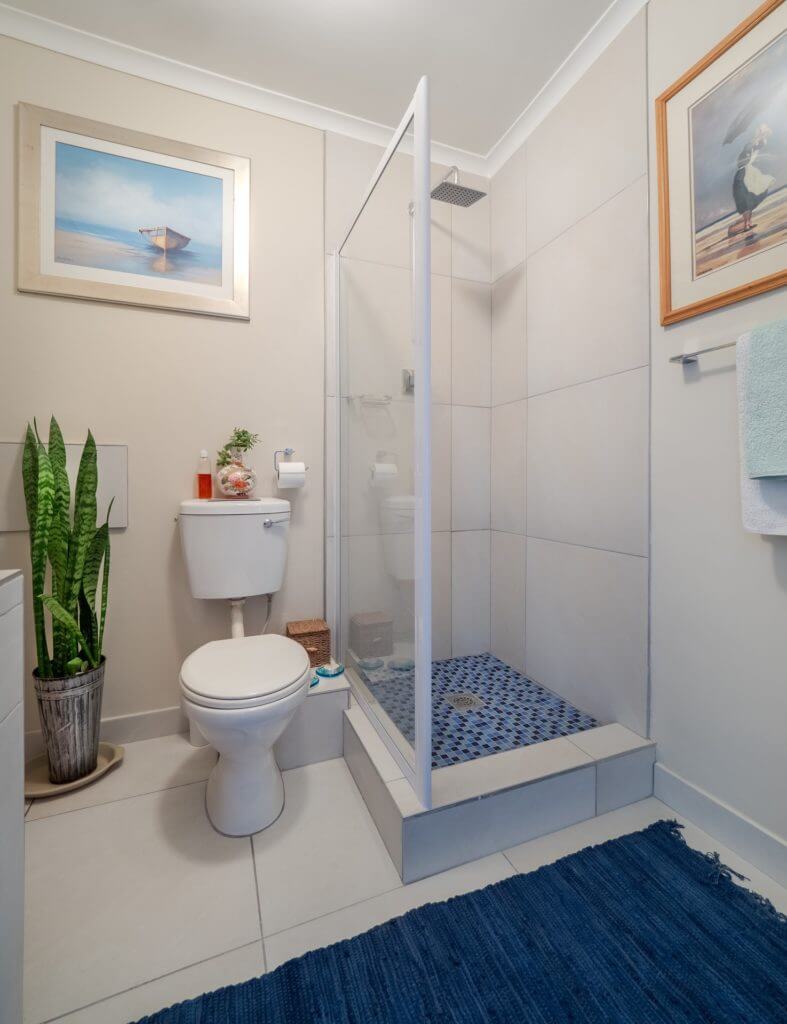
Standard Three-Quarter Bathroom Size
- Area: Between 36 to 40 square feet
- Dimensions: Commonly found in 6′ x 6′ or 5′ x 8′ layouts
Ideal for homes with limited space or for a secondary bathroom, three-quarter bathrooms offer a blend of functionality and compactness.
Full Bathroom
A full bathroom has all the essential fixtures: toilet, sink, shower, and a bathtub.
Find the Right Contractor for Your Bathroom Remodeling Project
Whether you’re ready to begin your project now or need some expert advice, our network of contractors are here to help. With a few simple questions, we’ll find the best local professionals for you
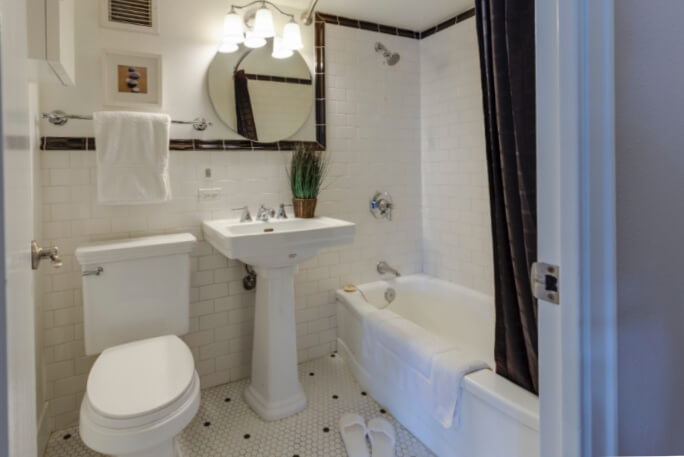
Standard Full Bathroom Size:
- Area: 40 to 60 square feet (about half the area of an apartment bedroom), though larger luxury bathrooms can exceed this.
- Dimensions: Typically, around 8′ x 5′ or 8′ x 6′
This is the most common type of primary bathroom in many homes, offering comprehensive amenities for daily routines.
Primary Bathroom
Often adjoining the primary bedroom, this bathroom is larger and may have additional amenities like dual sinks, a separate shower and bathtub, or even a spa tub.
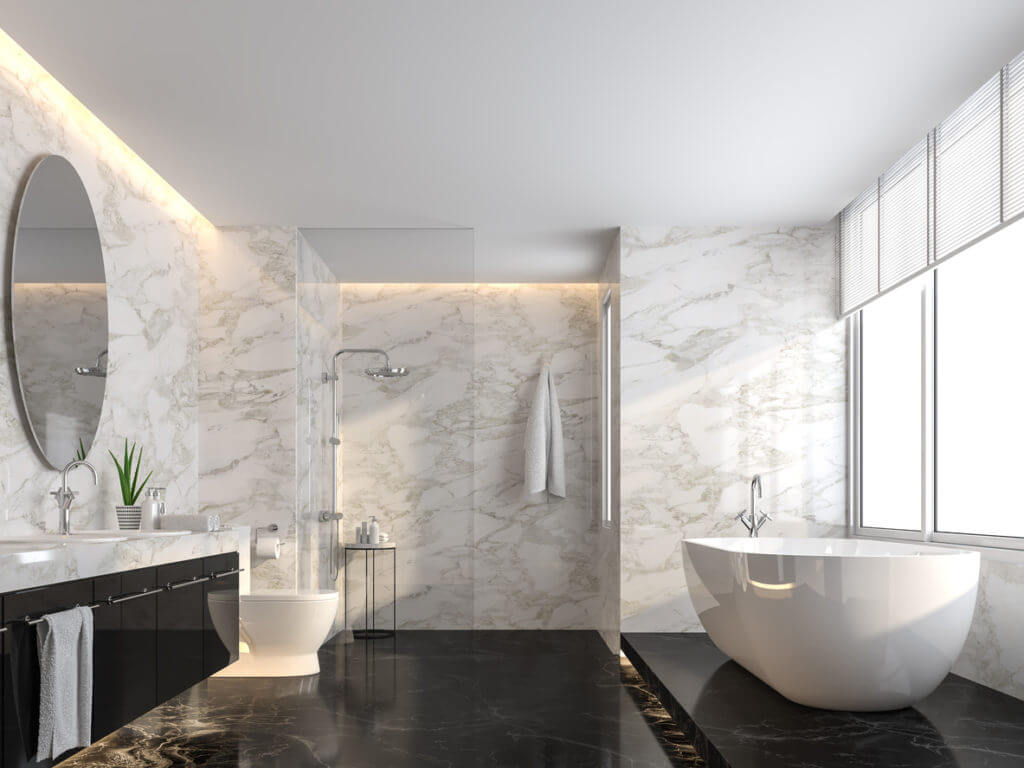
Standard Primary Bathroom Size:
- Area: Starts at 100 square feet (about the area of an apartment bedroom) and can go much higher
- Dimensions: 10′ x 10′ is a common starting point, but sizes vary based on the home’s design and luxury features.
What’s the difference between a master bathroom and a primary bathroom?
There’s no functional difference — master bathroom and primary bathroom refer to the same thing: the main bathroom attached to the largest bedroom in a home. The term primary has become more common in recent years as the home improvement and real estate industries move toward more inclusive language. While master is still widely understood, primary bathroom is now the preferred term in listings, design content, and renovation planning. So whether you call it primary or master, you’re talking about the same space — it’s just a shift in terminology, not features.
Standard Component Sizes
Understanding the sizes of individual bathroom components can also be helpful in understanding standard bathroom sizes:
- Toilet: About 2′ x 3′ footprint, and about 14″ to 19″ in height.
- Sink/Vanity: Width varies from 24″ for a single sink to 60″ or more for dual sinks. Depth is often around 20″-21″, and height ranges between 32″-36″.
- Shower: A standard standalone shower stall size is 32″ x 32″. However, more spacious designs can be 36″ x 48″ or larger. For luxury homes or primary baths, walk-in showers can be much larger.
- Bathtub: The average size for a standard bathtub is 60″ long x 30″–32″ wide. Freestanding or soaking tubs can be larger, with many variations in shape and size.
Importance of Understanding Standards
Knowing these standard bathroom sizes and components is not just about compliance or fitting into a mold. It helps homeowners and designers:
- Plan renovations or new constructions: With size benchmarks, it’s easier to allocate space efficiently.
- Ensure comfort and accessibility: Adhering to or exceeding these sizes ensures that bathrooms are comfortable to move around in and are accessible to all, including those with mobility challenges.
- Resale value: A bathroom that meets or exceeds standard sizes can be an appealing selling point.
While these are standard bathroom sizes in the U.S., it’s essential to remember that customization is always possible. Each home and homeowner has unique needs and preferences. However, by starting with these benchmarks, one can ensure that any deviations or customizations still uphold the principles of comfort, functionality, and aesthetic appeal.
Find the Right Contractor for Your Bathroom Remodeling Project
Whether you’re ready to begin your project now or need some expert advice, our network of contractors are here to help. With a few simple questions, we’ll find the best local professionals for you
Reviews from Real Homeowners
Welcome to Homeowner Resources! We are the Modernize blog. Modernize pairs more than 3 million homeowners a year with pre-vetted contractors in their area. This blog started because we believe homeowners should know everything about their homes, from how their HVAC works to which front door colors they might love. On Homeowner Resources, you can find information on every part of your home, right down to how you can negotiate with contractors to get the best price. Here's more about the blog.
Need a contractor? Learn more about how Modernize finds the right pro for you.
